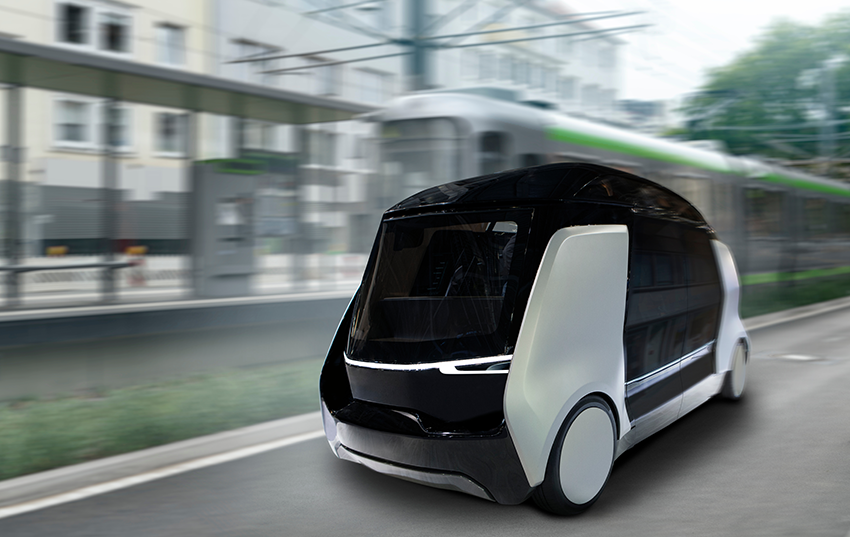
When the California Public Utilities Commission (CPUC) granted Cruise and Waymo permission to operate fared operations 24/7 in San Francisco in August, pushback from the public soon followed. Robotaxis, or autonomous vehicles (AVs) designed to serve the rideshare and delivery market, have grabbed headlines as they take to public streets, and cause havoc, in a handful of US cities. Publicly available data from the California DMV show that in August 2023, 14 crashes involving an autonomous vehicle happened in the state, with incidents in both San Francisco and Los Angeles. Waymo, Cruise, Zoox, Ghost Autonomy and WeRide each had at least one vehicle involved in a crash during the month.
Some cities are ready to usher in the robotaxi era, but many more are not. Municipalities must be active participants in bringing robotaxis to their streets by understanding and fostering the right compute, connectivity and community engagement to make deployments work for their cities’ unique needs.
The Take
Robotaxis have waxed and waned in the past half-decade as tech companies aimed to deliver on lofty promises of autonomous ridesharing in cities. Proponents of technology say that robotaxis can bring benefits in reducing transportation emissions and making roadways safer, although critics are wary about how safe autonomous systems can be — namely, their incidents of interference with emergency responders. Ensuring that a city is ready for these vehicles will require the close coordination of public and private utilities and the community. Beyond ensuring the public is onboard with deployments, cities will need to ensure that they have the connectivity infrastructure and ecosystem partners to support the growing amount of data being generated by these vehicles, especially as they scale.
Technology overview
Robotaxis are AVs designed to operate as a service for ridesharing, delivery and first- and last-mile shuttling. Many companies have tried, and some have failed, to make it in the robotaxi market. Early entrants began outlining their robotaxi ambitions in 2020-2021, with many looking to work with transportation network companies like Uber Technologies Inc. and Lyft Inc. Mobility-as-a-service vendors like Via have also integrated robotaxis into their transit network offering through pilots.
Considerations
To date, US deployments of robotaxis have been concentrated in three cities: San Francisco; Austin, Texas; and Phoenix, all with temperate climates, due to AV’s difficulty navigating rainy and snowy conditions. Cruise is evaluating expansion in Miami; Nashville, Tenn.; Atlanta; Charlotte, NC; Raleigh, NC; San Diego; and Seattle. When determining city or town readiness to implement and build trust in robotaxis and AV technology, one should consider the following four factors, among others.
Community engagement: Engaging with the community is a task that city leaders and robotaxi providers need to do early, often and on an ongoing basis to build trust in the emerging technology. Cruise’s and Waymo’s deployment in San Francisco has been met with strict opposition, with protesters assembling at the former’s headquarters in the city in the weeks following the full-scale deployment. These protests mirror sentiment from our consumer surveys earlier this year, which found that caution reigns around fuller autonomy.
One-quarter of respondents to said that they “would never be willing to ride in one no matter what,” according to 451 Research’s Endpoints & IoT, Mobility – Connected Car & Autonomy Services 2023 survey.
That level of concern coupled with a lack of knowledge speaks to the need for greater levels of consumer exposure and education in this still-nascent market. Cities and AV vendors can get ahead of opposition by encouraging vendor-led engagement, learning, and technology explainer series. Nonprofits like Principles for Autonomous Vehicle Engagement serve as intermediaries between public and private interests in the AV space, focused on community-led deployments and education. Citizen engagement platforms, like CitizenLab, may also serve as a digital channel through which cities and vendors can collect feedback and address common concerns about deployments.
Compute: Beyond local data storage and processing, robotaxi operators can bolster edge compute ability on vehicles, removing dependency on wireless networks in the case of bandwidth shortages, power outages or the like. Autonomous vehicles are built with dozens of sensors that can perceive the environment as well as locate the vehicle in the world. Common perception sensors installed on AVs include radar, cameras and LiDAR; localization sensors include GPS, inertial measurement units and wheel encoders.
Using those inputs, along with several others, AVs must then perform the functions of planning and actuation. The AV must have a sense of where it is going and how to get there. This includes on a macro scale (which routes to take using onboard mapping software), as well as on a micro scale, such as what to do if a shopping cart randomly rolls out on the road in front of the vehicle. On the micro scale, this planning function takes place using complex algorithmic software, many times per second. The final function, actuation, is when a drive-by-wire system in the vehicle translates computer instructions from the planning system into driving actions such as accelerating, braking and turning. Ecosystem partners in data aggregation and datacenters will also play in a role in processing the vast amounts of data generated on and between robotaxis and their surroundings.
Connectivity: Emerging technologies like 5G and V2X (vehicle to everything), as well as network slicing and data prioritization strategies, can help ensure robotaxis maintain connectivity even during high-traffic events. AV operators typically design their technology so that AVs can perform perception, localization, planning and actuation functions without outside assistance. The vehicle becomes a self-contained compute module that can drive from point A to point B without further outside inputs.
However, there is allure in being able to send data to and from the AV in order to facilitate a more efficient and safer ride, as well as notifying outside parties of nearby AVs. This is often referred to as V2X technology, and includes communication between vehicles as well as to and from vehicles from infrastructure such as traffic lights, pedestrians and other micromobility operators, such as citizens on electric scooters. High-speed 5G connectivity and V2X capabilities in AVs allow them to receive important updated mapping information, such as traffic jams or construction sites, which could enable rerouting the vehicle in a more efficient way.
These are all ideal scenarios that do not always work out in reality. If robotaxis depend on wireless networks to maintain constant connectivity, then hiccups can and will occur. For example, bandwidth constraints posed by a festival in San Francisco limited Cruise vehicles’ ability to operate, causing a traffic jam of a robotaxi fleet in the city’s downtown in late August. Network-slicing is a telco-imposed solution, granting robotaxis their own “slice” of physical network infrastructure. By keeping AVs on their own band, safety-critical information can receive high-priority treatment, and additional network resources can be allocated during periods of bandwidth issues.
City, state and regulator buy-in: Authority over robotaxis varies between states, meaning each deployment will need to consider the role of its local stakeholders across government and regulators. States often look to take a unified approach to AV adoption through policy frameworks. Since 2017, the US-based National Conference of State Legislatures has tracked all bills related to autonomous vehicle technology, testing, cybersecurity, privacy and infrastructure. Of a total of 635 bills proposed, 137 have been enacted in 42 states. In 2023 alone, eight bills have been enacted in seven states. Some states, like Texas, do not permit individual cities to regulate autonomous vehicles, leaving the decision to the state level. In other states, individual cities and utilities can then decide which vendors will operate, where they are permitted, and at what times. In the case of San Francisco, the CPUC governed the decision around robotaxi operating hours, although not each city has a public utility overseeing such deployments.
Implications
The robotaxi industry has already experienced setbacks and delays. Although robotaxi ventures have spent billions funding R&D to develop their autonomous driving software, and in some cases, manufacturing purpose-built robotaxis, 2023 is the year that, for some, the path to commercialization may begin. Although early movers Cruise and Waymo can now operate paid rides in San Francisco, another hurdle may soon hinder the industry’s progress — community pushback. While ensuring technical support for robotaxis — connectivity and compute is paramount to safe and successful deployments — vendors should not overlook community sentiment, namely their concerns, when deploying robotaxis in cities and towns.
Want insights on IoT trends delivered to your inbox? Join the 451 Alliance.

